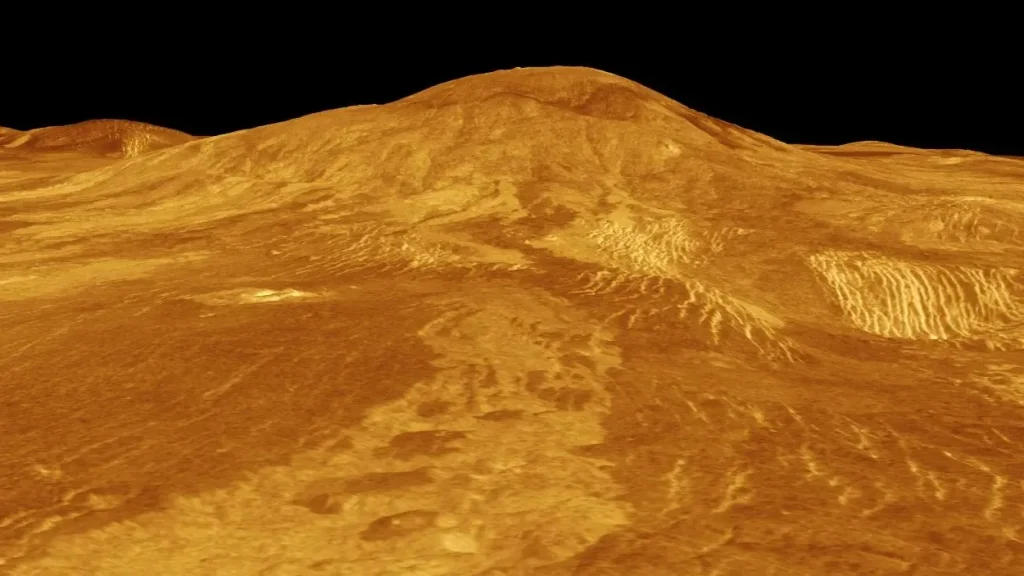Could Anything Survive on Venus?
The surface of Venus is way too hot and toxic for humans or animals to survive—but some scientists believe tiny forms of life could possibly live high in its atmosphere. Even though Venus is one of the most hostile planets in the solar system, the idea of life there hasn’t been completely ruled out.
Let’s explore why Venus is so dangerous—and why scientists are still keeping an eye on its skies.
🔎 Dive Deeper
- 🌡️ Why Is Venus So Inhospitable?
- 🦠 Could Microbes Live in the Clouds?
- 🧪 Phosphine and the Search for Life
- 🚀 Future Missions to Venus
- 🎯 Final Thoughts
- 📚 References
🌡️ Why Is Venus So Inhospitable?

NASA/JPL-Caltech
Venus is one of the most extreme places in the entire solar system. Here’s why it’s nearly impossible for life—at least the way we know it—to survive on the surface:
| Condition | Description |
|---|---|
| Temperature | Over 860°F (460°C)—hot enough to melt lead! |
| Atmospheric Pressure | 90 times greater than Earth’s—like being deep in the ocean |
| Atmosphere | Made mostly of carbon dioxide and sulfuric acid |
| Water | No liquid water anywhere on the surface |
🌋 The combination of heat, crushing pressure, and toxic air makes Venus’s surface deadly. No spacecraft has survived there for more than two hours.
🦠 Could Microbes Live in the Clouds?
Even though the surface is unlivable, scientists wonder if the upper atmosphere of Venus could support tiny life forms like microbes.
- About 30–40 miles (50–60 km) above the surface, temperatures are cooler—around 86°F (30°C).
- The pressure is similar to Earth’s.
- There’s some sunlight, which could support certain life processes.
🧪 Scientists have studied extremophiles—microorganisms that live in Earth’s harshest places, like boiling springs or acidic lakes. If life like that exists on Earth, maybe it could exist in Venus’s acidic clouds.
But there’s still a big problem: the clouds are made of sulfuric acid, which destroys most living things.
| 💡 Interesting Fact: Some types of Earth bacteria have been shown to survive in acidic environments, but not ones as harsh as Venus’s skies. |
🧪 Phosphine and the Search for Life
In 2020, scientists discovered something strange: phosphine gas in Venus’s atmosphere.
- On Earth, phosphine is made by living things (like microbes) or industry.
- There are no known non-living processes that could easily explain it on Venus.
- This led to excitement about possible life in the clouds.
However, later studies questioned this discovery. Some scientists say the phosphine detection might have been a mistake or misinterpreted signal.
🔬 So, while it’s not proof of life, it sparked new interest in studying Venus more closely.
🚀 Future Missions to Venus
Because of the mystery around possible life, several space agencies are planning new missions:
- NASA’s VERITAS and DAVINCI missions will explore Venus in the 2030s.
- ESA’s EnVision mission (European Space Agency) will study the planet’s surface and atmosphere.
- India’s Shukrayaan-1 mission is also in development.
🛰️ These missions will help us learn:
- How Venus formed and changed
- Whether life-supporting conditions ever existed
- What its atmosphere is really made of
Scientists hope to fly through the cloud layers to test for chemicals, microbes, or any clues of life.
🎯 Final Thoughts
So, could anything survive on Venus? Not on the surface—it’s far too hot, pressurized, and acidic. But in the cloud layers high above the planet, there’s a small chance that microbes might exist, clinging to life in the less harsh upper atmosphere.
While there’s no solid evidence yet, the idea that something could live in such an extreme place keeps scientists curious and inspired. Venus may not be friendly to life, but it still holds secrets worth exploring.
📚 References
- NASA. “Could There Be Life in the Clouds of Venus?” https://www.nasa.gov/feature/goddard/2020/life-in-the-clouds-of-venus
- BBC News. “Venus: Possible Sign of Life Detected in Atmosphere.” https://www.bbc.com/news/science-environment-54133538
- Nature Astronomy. Greaves, J. et al. “Phosphine gas in the cloud decks of Venus.” https://www.nature.com/articles/s41550-020-1174-4
- The Planetary Society. “Future Missions to Venus.” https://www.planetary.org/space-missions/venus-missions
- National Geographic. “Venus Could Harbor Life in Its Cloud Tops, New Study Suggests.” https://www.nationalgeographic.com
